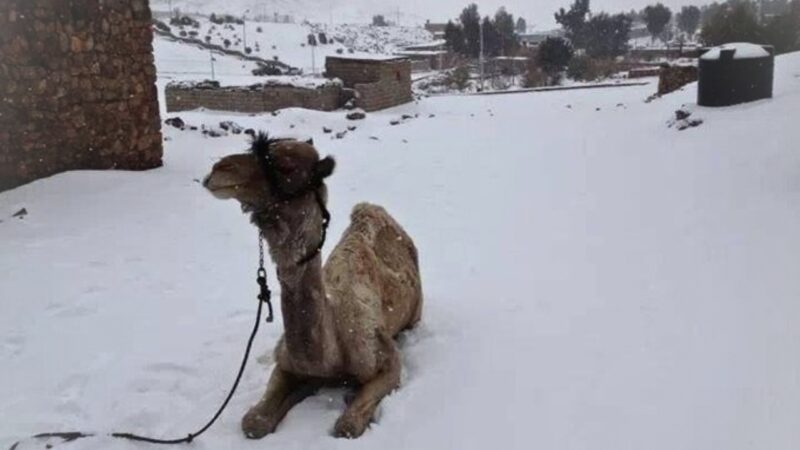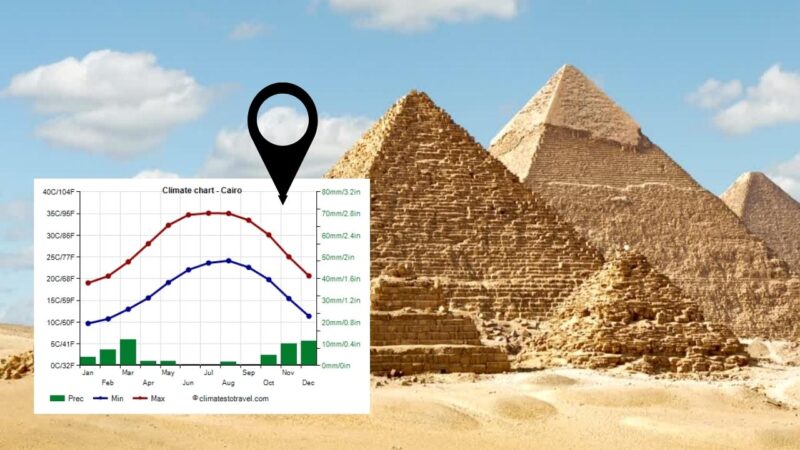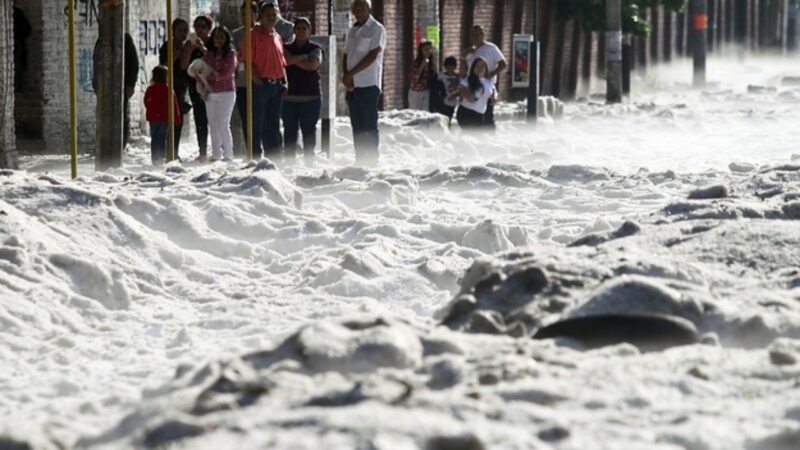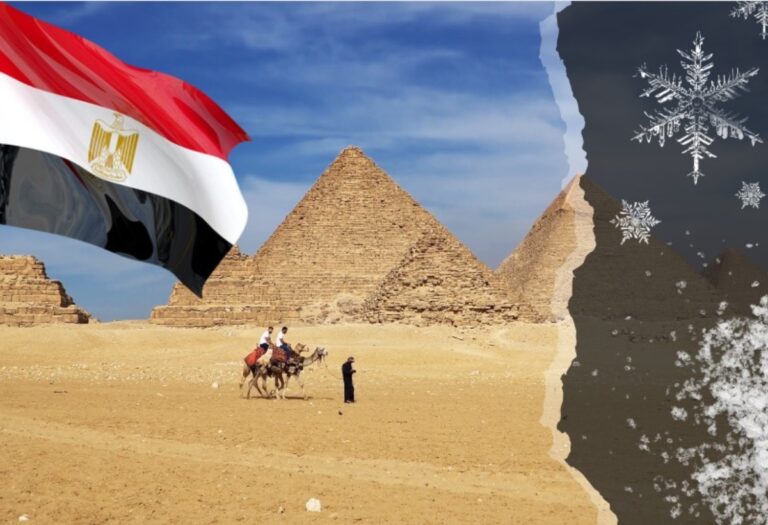Imagine standing amidst the grandeur of the pyramids, with the mighty Nile flowing nearby, and the vast expanse of the desert stretching as far as the eye can see. Welcome to Cairo, Egypt’s mesmerizing capital, where history whispers its tales from every corner. But amidst this backdrop of ancient wonders and desert landscapes, can snow find its place? Journey with us as we unravel the mysteries of Cairo’s climate and its rare snowy tales.
A desert climate, often referred to as an arid climate, is primarily characterized by low precipitation levels. The amount of evaporation in a desert often exceeds the amount of rainfall it receives, leading to a net loss of moisture. This is precisely what Cairo experiences. The city’s average annual rainfall is a mere inch, making it one of the driest capitals in the world.
The Scorching Summers
Summers in Cairo are not just hot; they are intensely hot. From May to August, daytime temperatures can easily soar above 35°C (95°F), with peaks occasionally reaching 40°C (104°F) or more. The sun blazes down with relentless intensity, making outdoor activities during midday quite challenging. However, the low humidity levels mean that, despite the heat, the air remains relatively dry.
Mild Winters
Contrary to its blazing summers, Cairo’s winters are surprisingly mild. From December to February, daytime temperatures hover around 18°C to 22°C (64°F to 72°F). Nights can be cooler, with temperatures dropping to around 10°C (50°F). This stark contrast between summer and winter temperatures is a hallmark of desert climates.
Rainfall
Rain in Cairo is a rare event. When it does rain, it’s often a light drizzle that doesn’t last long. The city’s annual rainfall is so low that even a short burst of heavy rain can lead to localized flooding, primarily because the ground, being so unused to water, struggles to absorb it quickly.
Temperature Fluctuations: Day vs. Night
One of the most intriguing aspects of Cairo’s climate is the significant temperature difference between day and night. It’s not uncommon for temperatures to plummet by 15°C (27°F) or more after sunset. This diurnal temperature variation is due to the desert’s inability to retain heat once the sun goes down. The clear skies and dry air mean that the heat accumulated during the day escapes rapidly into the atmosphere at night.
Historical Records of Snow in Cairo

Cairo, with its millennia-old pyramids and bustling bazaars, is a city that evokes images of golden sands and scorching sun. However, nature has its ways of surprising us, and Cairo’s climate history is no exception. Let’s delve deeper into the rare instances when this desert city was blanketed in snow.
The Anomaly of Snow in a Desert City
The very idea of snow in Cairo is counterintuitive. Given its desert climate, the city is more accustomed to sandstorms than snowstorms. However, historical records and anecdotes suggest that snowfall, though extremely rare, is not entirely unheard of.
December 2013: A Winter Wonderland
The snowfall in December 2013 stands out as one of the most significant climatic events in Cairo’s recent history. For many residents, it was the first time they had ever seen snow. The city, which had not witnessed such an event in over a century, was transformed into a winter wonderland overnight.
The iconic pyramids, usually bathed in golden sunlight, were adorned with a white blanket, creating a surreal and picturesque landscape. Streets, rooftops, and cars were covered in snow, giving the city an ethereal look. The event was so unexpected that it not only made national but international headlines, with news agencies around the world covering this rare phenomenon.
Social media platforms were abuzz with excitement. Residents and tourists posted photographs and videos(click here), capturing the joy and wonder of the moment. Children, many of whom had only seen snow in movies or books, were seen playing and making snowballs, reveling in the novelty of the experience.
The Meteorological Explanation
The 2013 snowfall was not an isolated event affecting only Cairo. It was part of a larger cold snap that swept across parts of the Middle East. Regions that were unaccustomed to such weather, including parts of Israel, Jordan, and Syria, also experienced snowfall.
Meteorologists attributed this unusual event to a combination of factors. A low-pressure system, coupled with cold air from the north, resulted in precipitation in areas that typically remained dry during the winter. The temperatures dropped sufficiently for the rain to turn into snow, leading to the unexpected snowfall.
Historical Anecdotes and Records
While the 2013 event is the most well-documented instance of snowfall in Cairo, there are scattered references in historical texts and local anecdotes that suggest the city might have experienced snow in the distant past. However, concrete records are sparse, and much of the information is based on oral histories and folklore.
Factors Influencing Cairo’s Climate

Cairo’s unique climate is shaped by a combination of geographical, topographical, and hydrological factors. Let’s delve deeper into these elements to understand the intricacies of Cairo’s weather patterns.
Geographical Location
Cairo’s proximity to the vast Sahara Desert plays a dominant role in its climatic conditions. The Sahara, being one of the world’s largest hot deserts, exerts a significant influence on the surrounding regions. The hot and dry winds from the desert sweep into Cairo, especially during the summer months, leading to elevated temperatures and low humidity levels. Additionally, the desert’s expansive sandy landscape reflects sunlight, further intensifying the heat experienced in the city.
Altitude
At an elevation of approximately 23 meters (75 feet) above sea level, Cairo’s altitude is relatively low. Altitude plays a crucial role in determining a region’s temperature. Higher altitudes often experience cooler temperatures due to the thinning of the atmosphere, which can’t trap as much heat.
In contrast, Cairo’s low elevation means that the atmosphere is denser, trapping more heat and leading to warmer conditions. While the city doesn’t benefit from the cooling effects seen in high-altitude areas, it also doesn’t face the extreme cold temperatures that such regions might encounter.
Proximity to the Nile
The Nile River, one of the world’s longest and most iconic rivers, flows majestically through Cairo. This vast water body acts as a natural temperature moderator for the city. Water has a high heat capacity, meaning it can absorb and store a significant amount of heat without a considerable rise in temperature.
During the hot days, the Nile absorbs some of the heat, releasing it slowly during the cooler nights. This process helps in slightly tempering the extreme temperatures that Cairo might otherwise experience. Moreover, areas closer to the riverbanks often feel cooler and more humid than regions further inland, thanks to the evaporative cooling effect of the Nile.
FAQs

How do the locals in Cairo react to rare snowfall events?
Given the rarity of snowfall in Cairo, locals often react with a mix of astonishment and delight. Especially for the younger generation, it’s a novel experience. Streets become lively with children and adults alike venturing out to experience the snow, often resulting in impromptu snowball fights and snowman-building sessions.
Are Cairo’s infrastructure and buildings equipped to handle snowfall?
Not really. Since snow is such a rare occurrence, buildings, roads, and other infrastructure in Cairo are not designed to handle snow or its after-effects. As a result, even a light snowfall can lead to disruptions in daily life, including traffic snarls and occasional power outages.
Has snowfall in Cairo ever impacted its historical monuments, like the pyramids?
While snow adds a picturesque layer to Cairo’s historical monuments, there’s no record of it causing any damage. The pyramids and other ancient structures have withstood various weather conditions for thousands of years. However, it’s always advisable for tourists to exercise caution when visiting these sites during rare snowy conditions.
Are there any local legends or folklore in Cairo associated with snow?
While Cairo’s history is rich with legends and folklore, snow-specific tales are rare due to its infrequency. However, whenever snow does fall, it often becomes the talk of the town and is remembered for generations, sometimes leading to anecdotal stories passed down through families.
How does the rare snowfall affect the flora and fauna of Cairo?
The brief snowfall doesn’t have a long-lasting impact on Cairo’s native flora and fauna. Most plants and animals in the region are adapted to desert conditions and can withstand short-term changes in weather. However, the sudden drop in temperature might cause some animals to seek shelter or become less active.
Are there any precautions that residents and tourists should take during unexpected snowfall in Cairo?
Yes, both residents and tourists should be cautious about slippery roads and pathways. It’s also advisable to dress warmly, check local news for any disruptions, and avoid driving unless necessary, as the city’s infrastructure isn’t equipped to handle snowy conditions.
Final Words
While Cairo does experience occasional cold snaps, snow is a rare occurrence. The city’s desert climate, geographical location, and other factors mean that snowfall is not a regular feature of Cairo’s winters. However, as with many parts of the world, changing climate patterns can lead to unexpected weather events, as witnessed in 2013. For now, though, if you’re planning a trip to Cairo, it’s safe to say you won’t need to pack your snow boots!
Related Posts:
- Does It Snow In Kentucky? Winter Wonders in the Heartland
- Does It Snow In El Paso, Texas? A Tale of Cowboys…
- Does It Snow In Germany? Fairy Tale Castles, Mulled…
- Does It Snow In Poconos? A Tale of Two Seasons
- Does It Snow In Prescott Valley, AZ? A Tale of Two Climates
- Nile Seasons: What Time of Year is Best to Visit…







